thiethylperazine
- CAS NO.:1420-55-9
- Empirical Formula: C22H29N3S2
- Molecular Weight: 399.62
- MDL number: MFCD00865537
- EINECS: 215-819-0
- SAFETY DATA SHEET (SDS)
- Update Date: 2024-11-06 19:41:26
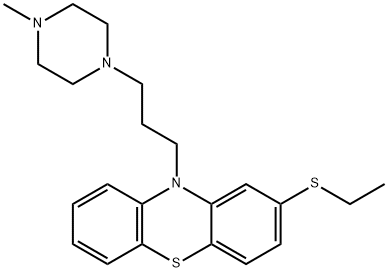
What is thiethylperazine?
Toxicity
Manifestations of acute overdosage of TORECAN (thiethylperazine) can be expected to reflect the CNS effects of the drug and include extrapyramidal symptoms (E.P.S), confusion and convulsions with reduced or absent reflexes, respiratory depression and hypotension.
Originator
Torecan,Boehringer Ingelheim,US,1961
The Uses of thiethylperazine
Thiethylperazine acts both as a peripheral and as a central antiemetic.
Background
A dopamine antagonist that is particularly useful in treating the nausea and vomiting associated with anesthesia, mildly emetic cancer chemotherapy agents, radiation therapy, and toxins. This piperazine phenothiazine does not prevent vertigo or motion sickness. (From AMA Drug Evaluations Annual, 1994, p457)
Indications
For the treatment or relief of nausea and vomiting.
Definition
ChEBI: A member of the class of phenothiazines that is perazine substituted by a ethylsulfanyl group at position 2.
Manufacturing Process
26.1 parts of 3-ethylmercapto-phenothiazine (melting point 95°C to 97°C),
4.7 parts of finely pulverized sodium amide and 120 parts by volume of
absolute xylene are heated to boiling for two hours, under reflux and while
stirring the reaction mixture, at an oil-bath temperature of 180°C. Without
interrupting the heating, a solution of 20.0 parts of 1-methyl-4-(3'-
chloropropyl-1')-piperazine (boiling point 95°C to 97°C at a pressure of 10
mm Hg) in 20 parts by volume of xylene is added dropwise in the course of 1
1/2 hours. After heating 3 more hours, the reaction mixture is cooled and
10.0 parts of ammonium chloride added; the mixture is then shaken out three
times, using 50 parts by volume of water each time. The xylene solution is
extracted with 250 parts by volume of aqueous tartaric acid of 15% strength,
after which the tartaric acid extract is washed with 80 parts by volume of
benzene and then rendered phenolphthalein-alkaline by the addition of 60
parts by volume of concentrated aqueous caustic soda solution. The base
which precipitates is taken up in a total of 150 parts by volume of benzene;
the benzene layer is dried over potassium carbonate and is then evaporated
under reduced pressure. The residue from the evaporation is distilled in a high
vacuum. After separating a preliminary distillate which passes over up to
226°C under a pressure of 0.01 mm Hg the main fraction - 3-ethylmercapto-
10-[3'-(1''-methyl-piperazyl-4'')-propyl-1']-phenothiazine - which distills at
226°C to 228°C under the last-mentioned pressure is collected. The
analytically pure base boils at 227°C under a pressure of 0.01 mm Hg and
melts at 62°C to 64°C.
Upon the addition of ethanolic HCl to a solution, cooled to 0°C, of 26.38 parts
of the free base in 130 parts by volume of absolute ethanol, until a Congoacid
reaction is achieved, the crystalline dihydrochloride of 3-ethylmercapto-
10-[3'-(1''-methyl-piperazyl-4'')-propyl-1']phenothiazine is precipitated. The
analytically pure salt has a melting point of 214°C to 216°C (bubbles); it
begins to sinter at 205°C. The dimaleate melts at 188°C to 190°C after
sintering from 180°C (recrystallized from methanol).
Therapeutic Function
Antiemetic
Trade name
Torecan (Boehringer Ingelheim)
Pharmacokinetics
Thiethylperazine, an atypical antipsychotic agent, is used to treat both negative and positive symptoms of schizophrenia, acute mania with bipolar disorder, agitation, and psychotic symptoms in dementia. Future uses may include the treatment of obsessive-compulsive disorder and severe behavioral disorders in autism. Structurally and pharmacologically similar to clozapine, Thiethylperazine binds to alpha(1), dopamine, histamine H1, muscarinic, and serotonin type 2 (5-HT2) receptors.
Metabolism
Not Available
Properties of thiethylperazine
| Melting point: | 62-64° |
| Boiling point: | bp0.01 227° |
| Density | 1.1684 (rough estimate) |
| refractive index | 1.5605 (estimate) |
| storage temp. | 4°C, protect from light |
| solubility | DMSO : 100 mg/mL (250.24 mM; Need ultrasonic) |
| pka | 7.66±0.10(Predicted) |
| form | Solid |
| color | Light brown to gray |
Safety information for thiethylperazine
Computed Descriptors for thiethylperazine
New Products
Tert-butyl bis(2-chloroethyl)carbamate (S)-3-Aminobutanenitrile hydrochloride N-Boc-D-alaninol N-BOC-D/L-ALANINOL N-octanoyl benzotriazole 3,4-Dibenzyloxybenzaldehyde 4-Hydrazinobenzoic acid 1,1’-CARBONYLDIIMIDAZOLE R-2-BENZYLOXY PROPIONIC ACID 3-NITRO-2-METHYL ANILINE 4-IODO BENZOIC ACID 4-HYDROXY BENZYL ALCOHOL 4-(3-chloropropyl)morpholine phenylhydrazine hydrochloride (2-Hydroxyphenyl)acetonitrile 4-Bromopyrazole 5-BROMO-2CYANO PYRIDINE 5,6-Dimethoxyindanone 5-broMo-2-chloro-N-cyclopentylpyriMidin-4-aMine 4-methoxy-3,5-dinitropyridine 2-(Cyanocyclohexyl)acetic acid 2-aminopropyl benzoate hydrochloride 1-(4-(aminomethyl)benzyl)urea hydrochloride tert-butyl 4- (ureidomethyl)benzylcarbamateRelated products of tetrahydrofuran
![10-[3-(4-methyl-1-piperazinyl)propyl]-10H-phenothiazine](https://img.chemicalbook.in/CAS/GIF/84-97-9.gif)

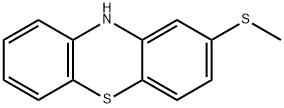

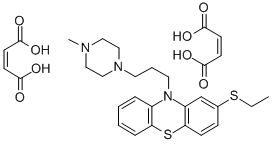
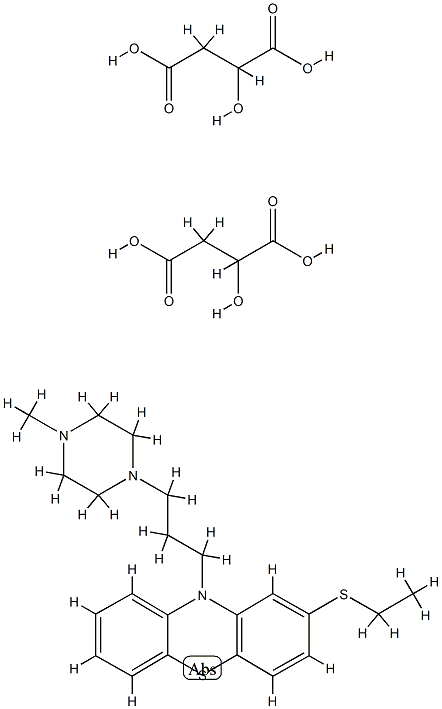
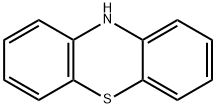
You may like
-
 (9H-fluoren-9-yl)methyl (2,5-dioxopyrrolidin-1-yl) carbonate 82911-69-1 98.0%View Details
(9H-fluoren-9-yl)methyl (2,5-dioxopyrrolidin-1-yl) carbonate 82911-69-1 98.0%View Details
82911-69-1 -
 13057-17-5 95.0%View Details
13057-17-5 95.0%View Details
13057-17-5 -
![2-Nitro-8,9-dihydro-5H-benzo [7] annulen-7(6H)-one 98.0%](https://img.chemicalbook.in//Content/image/CP5.jpg) 2-Nitro-8,9-dihydro-5H-benzo [7] annulen-7(6H)-one 98.0%View Details
2-Nitro-8,9-dihydro-5H-benzo [7] annulen-7(6H)-one 98.0%View Details
740842-50-6 -
 4-bromoaniline 106-40-1 99.0%View Details
4-bromoaniline 106-40-1 99.0%View Details
106-40-1 -
 1421517-99-8 99.0%View Details
1421517-99-8 99.0%View Details
1421517-99-8 -
 5-bromo-2-chlorobenzoic acid 99.0%View Details
5-bromo-2-chlorobenzoic acid 99.0%View Details
21739-92-4 -
 2-methyl-5-nitrophenol 98.0%View Details
2-methyl-5-nitrophenol 98.0%View Details
5428-54-6 -
 15761-38-3 97.0%View Details
15761-38-3 97.0%View Details
15761-38-3